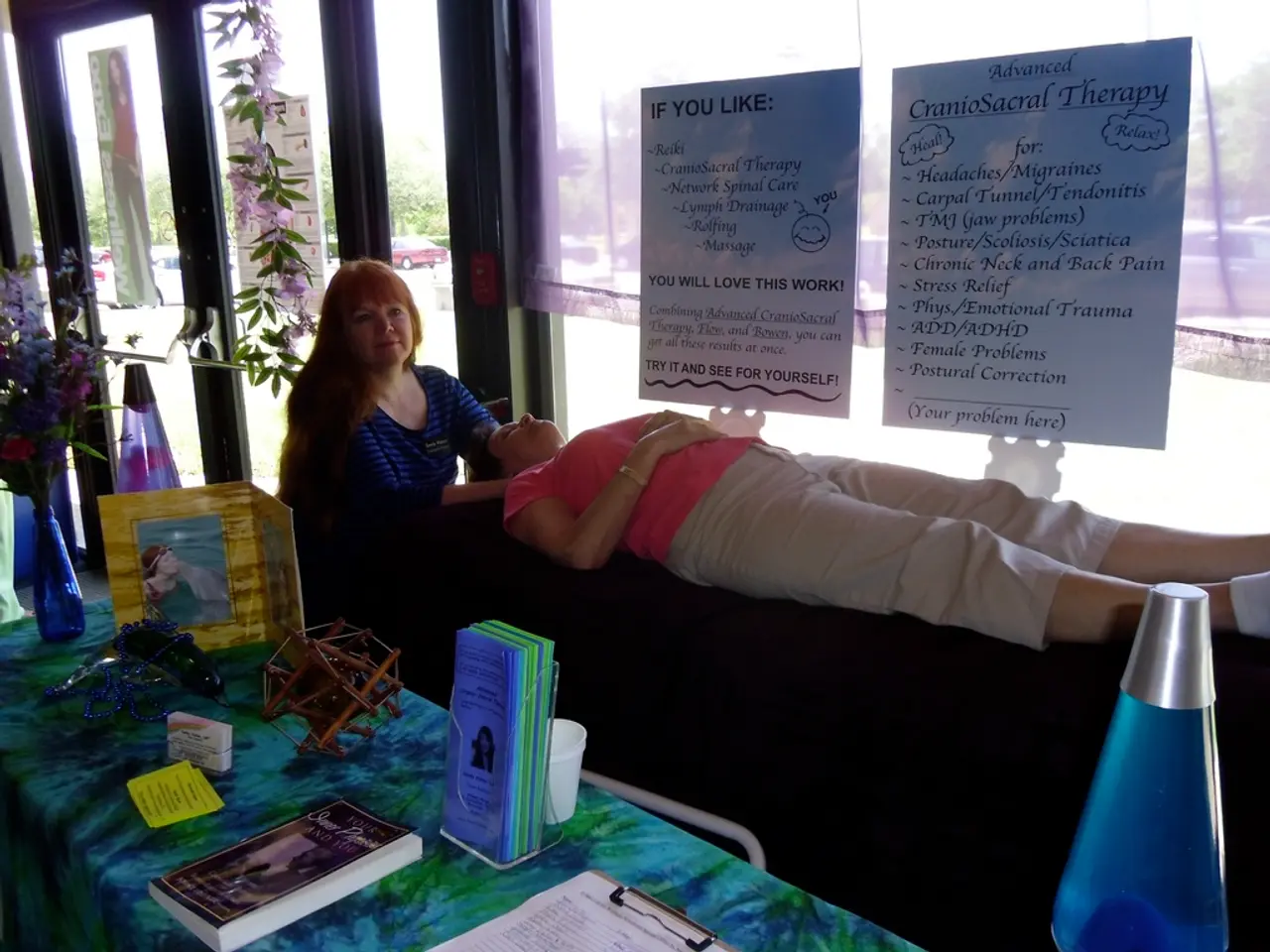Compulsive Romantic Fixation: Definition, Signs, and Insights
In the realm of mental health, obsessive love, while not officially recognised as a separate disorder, presents itself as a complex pattern of behaviours and thoughts that can significantly impact romantic relationships. This article aims to shed light on the signs of obsessive love, its overlapping conditions, and the approach to treatment.
Obsessive love, also known as Obsessive Love Disorder (OLD), is characterised by a constant need for validation, obsessive communication, boundary violation, controlling behaviour, extreme jealousy, possessiveness, emotional disruption, low self-esteem, and a refusal to participate in social activities that exclude the loved one.
These symptoms, however, overlap heavily with other conditions, such as Relationship Obsessive-Compulsive Disorder (ROCD), which involves intrusive doubts and compulsive checking in romantic relationships, or personality disorders marked by unstable relationships and intense emotions.
In the absence of formal diagnostic criteria for OLD, clinicians evaluate whether these behaviours better fit an existing diagnosis. They look for patterns of obsessional thinking, compulsive behaviours, emotional dysregulation, and interpersonal dysfunction consistent with established disorders.
Social and cultural norms can also contribute to unhealthy relationship styles, such as the belief that love equates to ownership or that a partner must prove their love through actions.
Treatment for obsessive love focuses on identifying the cause and addressing it, often involving therapy, learning healthy coping strategies, and maintaining a healthy lifestyle. For instance, toxic masculinity can lead to controlling, demanding, or abusive behaviour in relationships, and addressing these toxic attitudes is crucial.
Borderline personality disorder (BPD) may intensify obsessive tendencies due to fear of abandonment, difficulty controlling emotions, and an unstable self-image. In such cases, treating the underlying BPD becomes the primary focus.
If individuals with obsessive love are aware of their behaviour, seeking professional help is essential to understand the underlying cause and start a treatment plan.
It's important to note that the American Psychological Association defines love as a complex emotion involving strong feelings of tenderness or affection, pleasurable sensations, devotion, and concern for another person's well-being. Obsessive love, therefore, deviates from this norm, causing distress and impairment in daily functioning.
Other conditions, such as delusional jealousy (a type of psychotic disorder) and erotomania (a psychiatric disorder involving a delusional belief that another person of higher status loves the individual), can also present with symptoms similar to obsessive love.
Understanding the signs of obsessive love and its overlapping conditions is the first step towards seeking help and fostering healthier relationships. It's crucial to remember that help is available through emergency services, the National Domestic Violence Hotline, and local resources.
- Obsessive Love Disorder (OLD), manifesting as a constant need for validation, can affect romantic relationships, overlapping with conditions like Relationship Obsessive-Compulsive Disorder (ROCD) and personality disorders.
- In evaluating OLD, clinicians search for patterns consistent with established disorders, such as obsessional thinking, compulsive behaviors, emotional dysregulation, and interpersonal dysfunction.
- Social and cultural norms may perpetuate unhealthy relationship styles, misconstruing love as ownership or demanding actions to prove love.
- Treatment for obsessive love focuses on the cause, often entailing therapy, learning healthy coping strategies, and maintaining a balanced lifestyle, including addressing toxic masculinity.
- Borderline personality disorder (BPD) can exacerbate obsessive tendencies due to factors like fear of abandonment, emotional instability, and an unstable self-image, necessitating treatment of the underlying BPD.
- Aware individuals with OLD should seek professional help to understand the root cause and devise a treatment plan effectively.
- Love, as defined by the American Psychological Association, encompasses strong feelings of tenderness, affection, and concern for another person's well-being; OLD deviates from this norm, resulting in distress and impairment.
- Delusional jealousy, a type of psychotic disorder, and erotomania, a psychiatric disorder involving a delusional belief in unrequited love, can exhibit symptoms akin to OLD.
- Comprehending the signs of OLD and its overlapping conditions is instrumental in seeking help and cultivating healthier relationships.
- Support services, such as emergency services, the National Domestic Violence Hotline, and local resources, are available for those struggling with obsessive love or unhealthy relationships.
- Mental-health, health-and-wellness, education-and-self-development, and lifestyle resources emphasize the importance of personal growth and understanding our relationships better.
- In the realm of health and wellness, addressing and comprehending conditions such as OLD, HIV, diabetes, eczema, migraine, colitis, multiple sclerosis, asthma, ankylosing spondylitis, and bipolar disease contribute to mental, emotional, and physical well-being.




